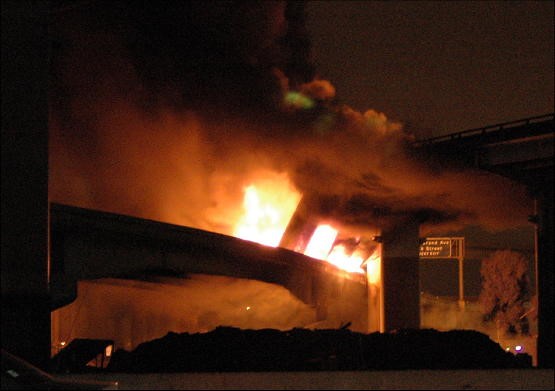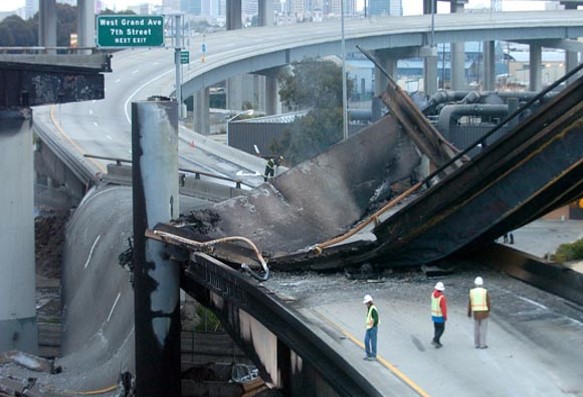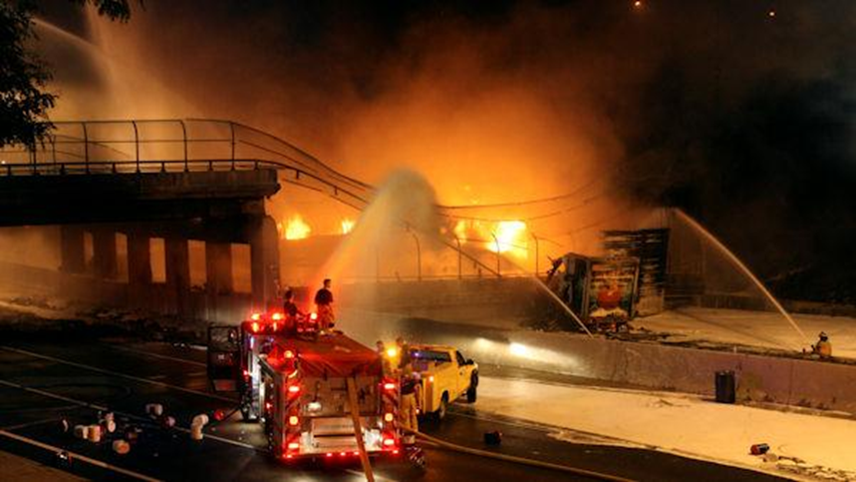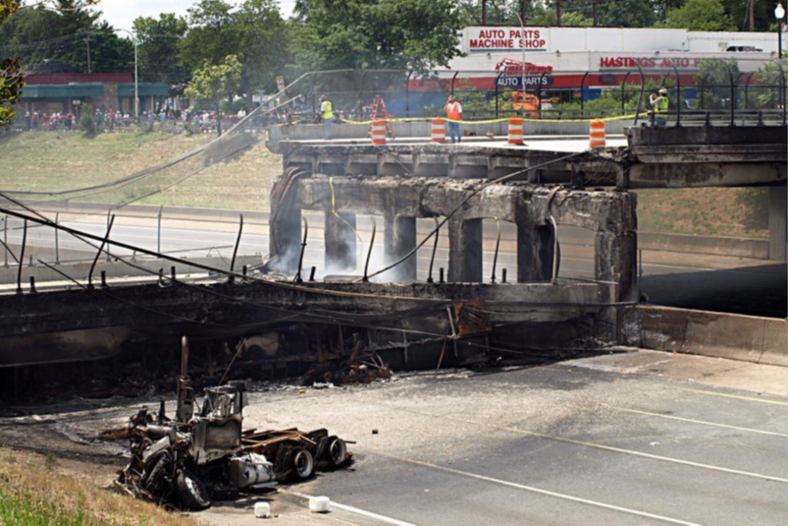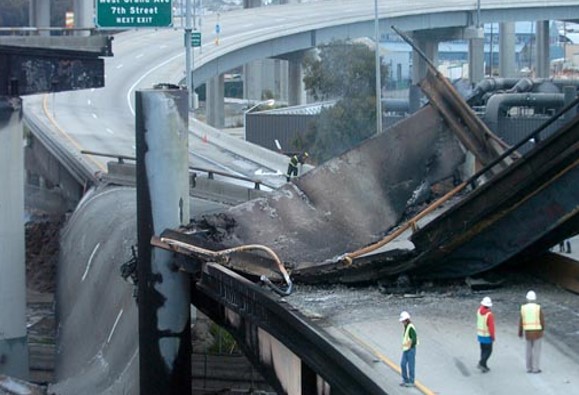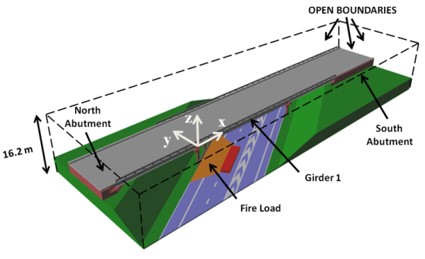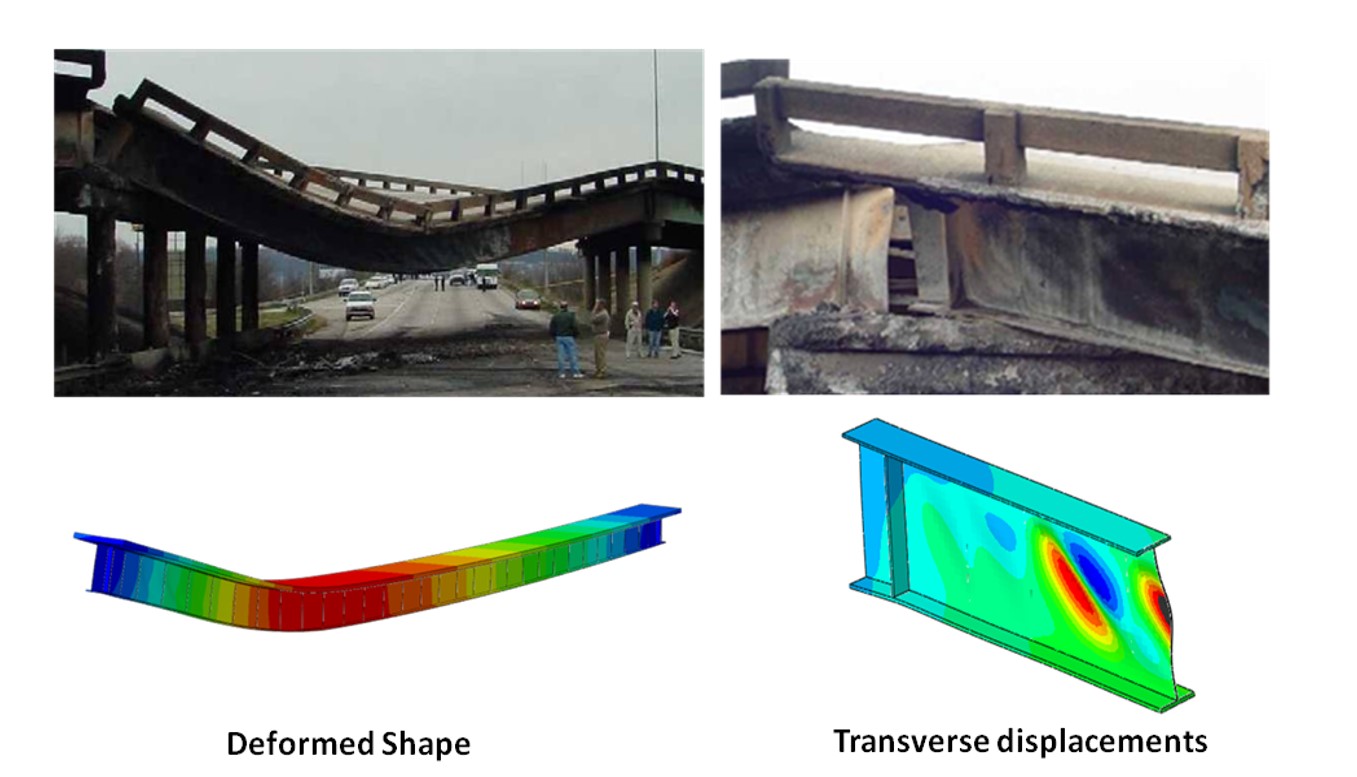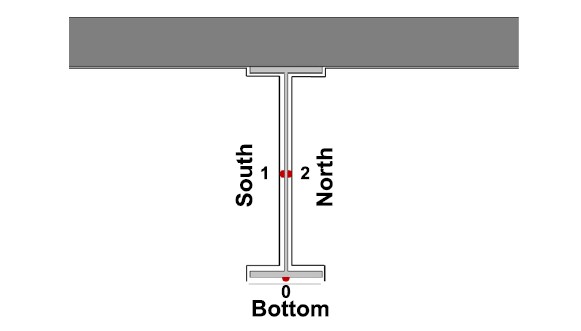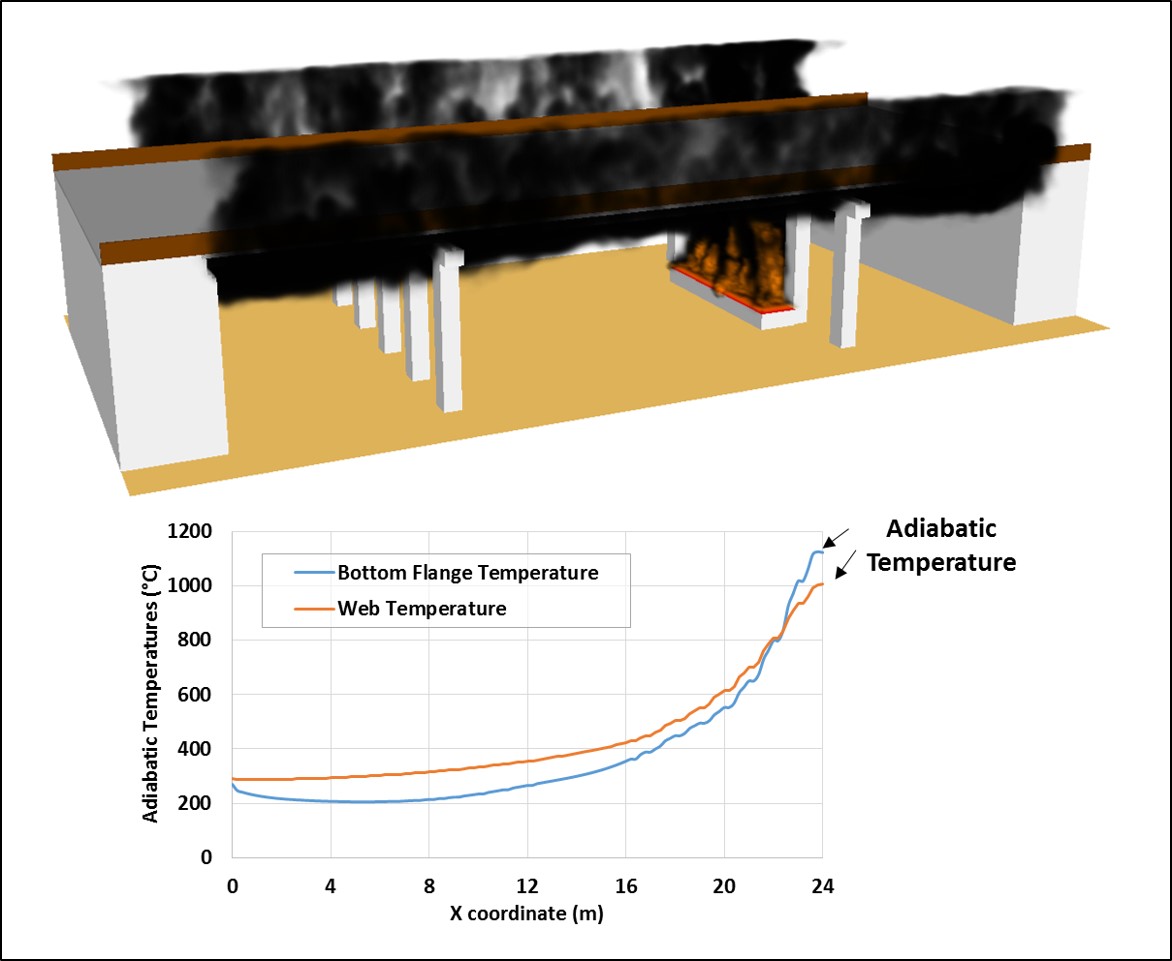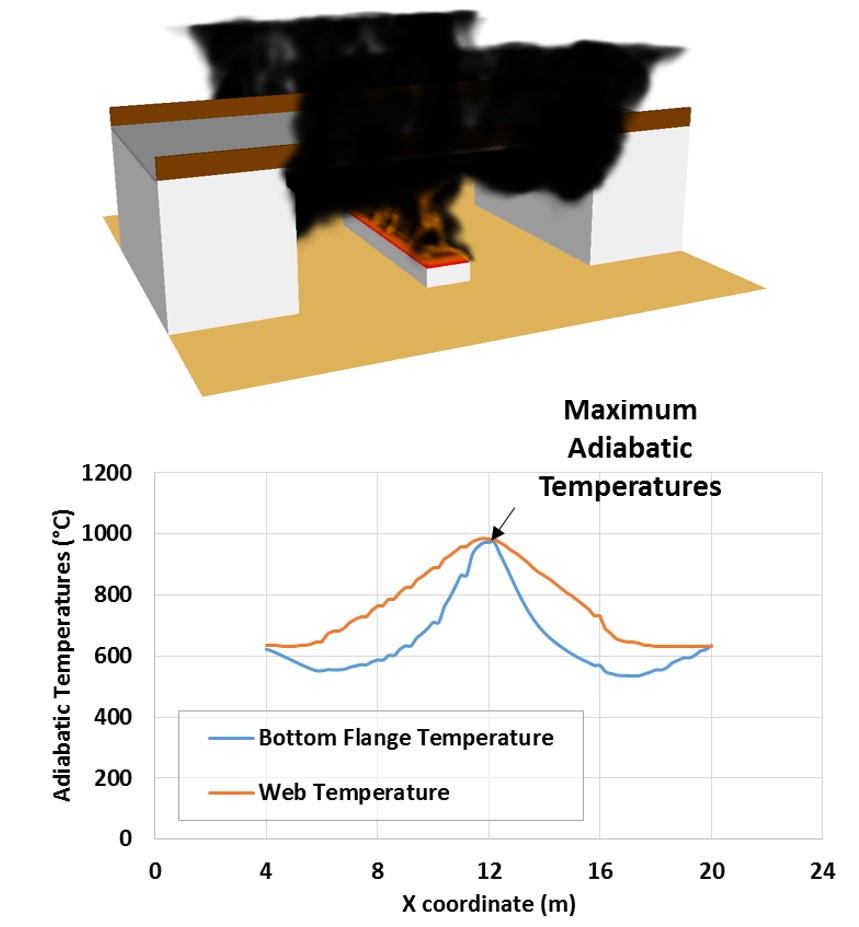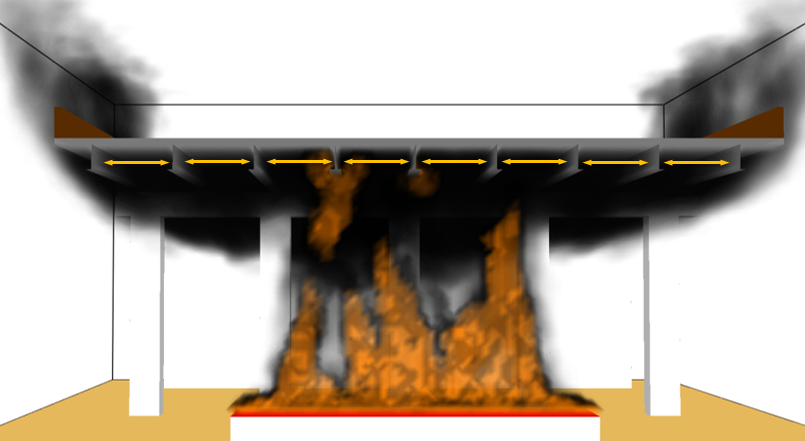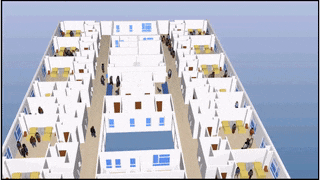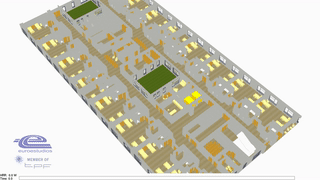STUDY OF PARAMETERS THAT INFLUENCE I-GIRDER BRIDGE BEHAVIOR DURING FIRE EVENTS
|
|
|
G. Peris-Sayol, I. Payá-Zaforteza
Euroestudios S.L
Universidad Politécnica de Valencia
Bridge fires

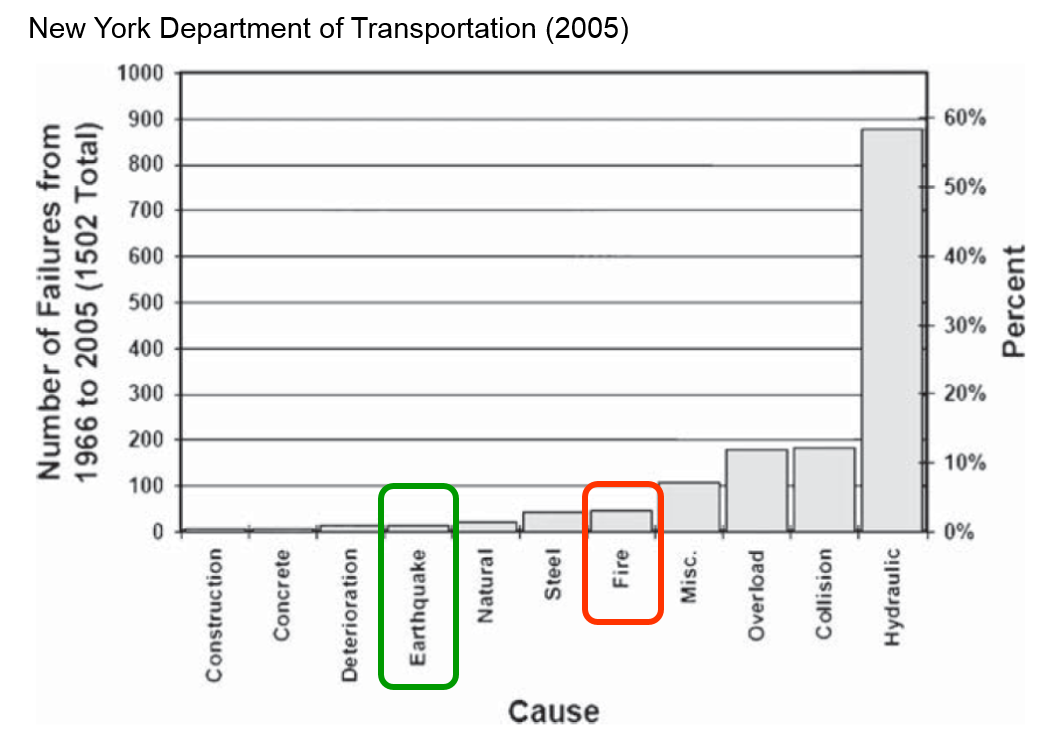
MacArthur Maze Collapse, USA, 2007
|
|
|
22 min until collapse
1 month closed
Repair Cost: 9 million USD
Indirect Cost: 180 million USD (6M USD/day)
9 mile, Detroit, USA, 2009
|
|
|
Standards
Eurocode 1: Actions on Structures


Standards
NFPA 502: Road Tunnels, Bridges and Other Limited Access Highway

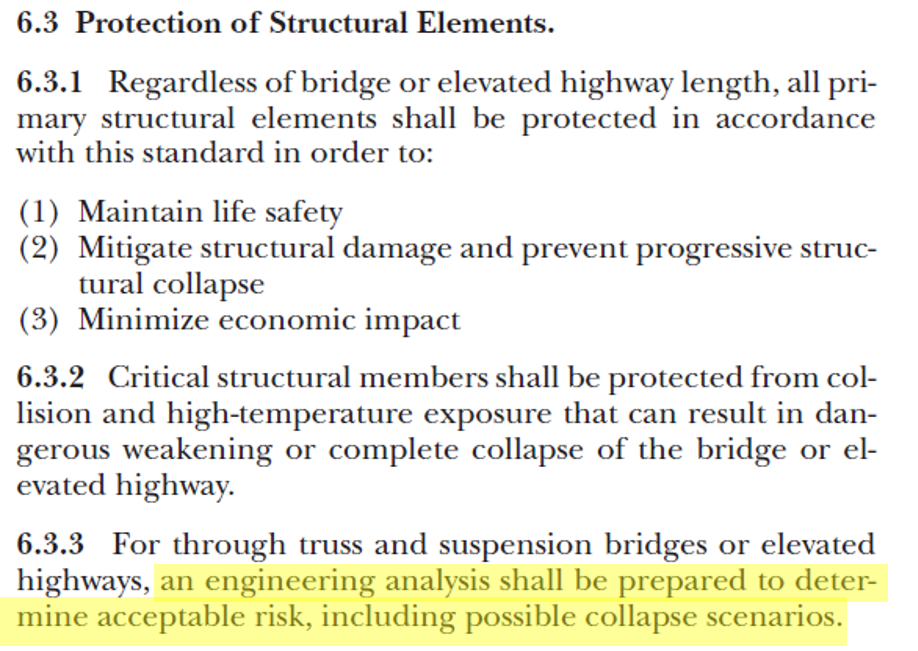
OBJECTIVE
To improve bridge resilience against fires
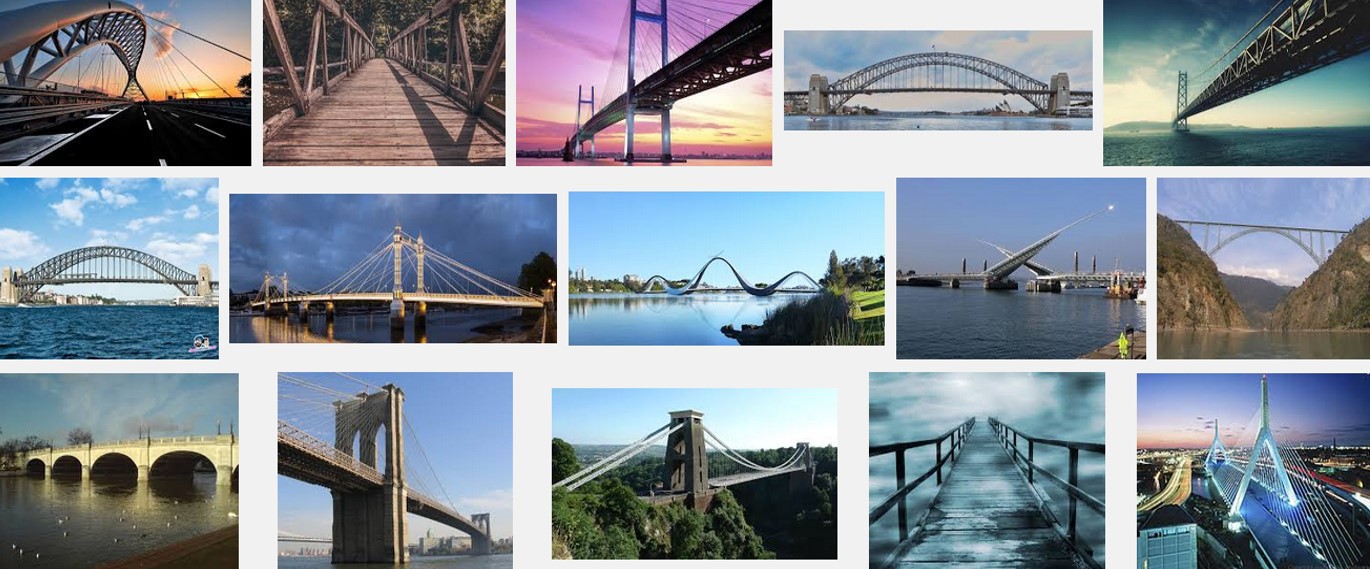
Tanker truck
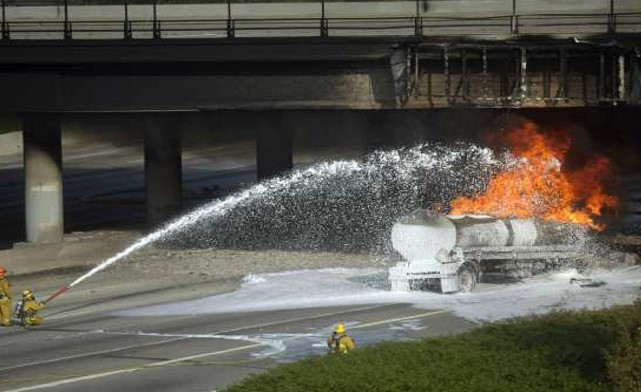
I-Girder Bridges
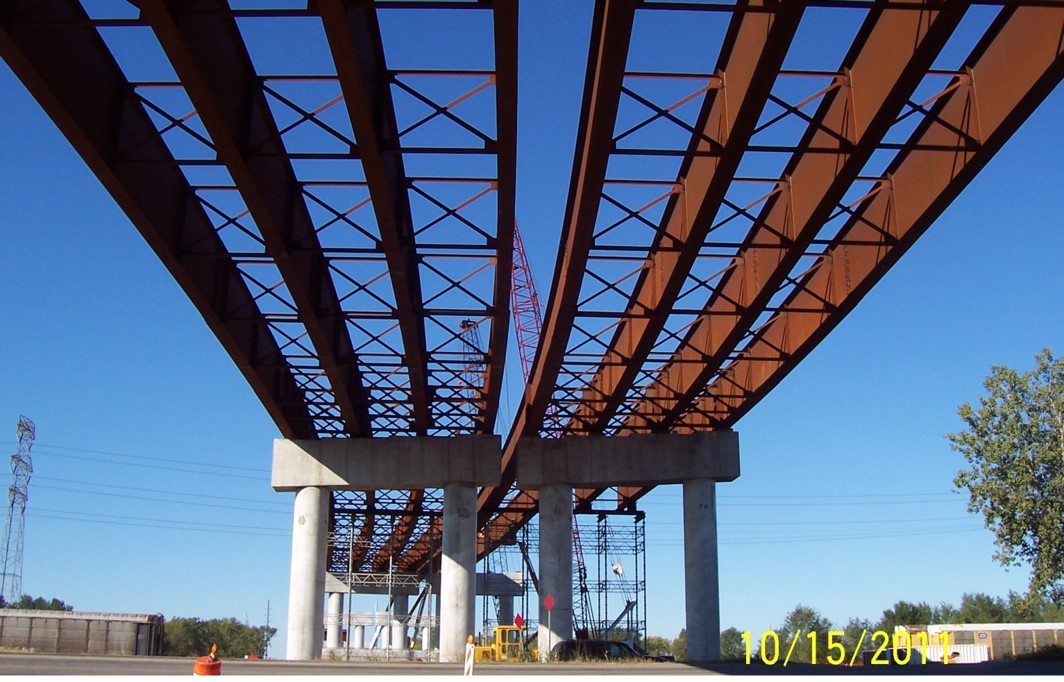
|
I-Girder bridge construction |
https://erkrishneelram.wordpress.com |
Very Common Type of Bridge
Approaches to Port Authority Bus Station, NYC

Very vulnerable structural system
Peris-Sayol et al. 2016, Garlock et al., 2012
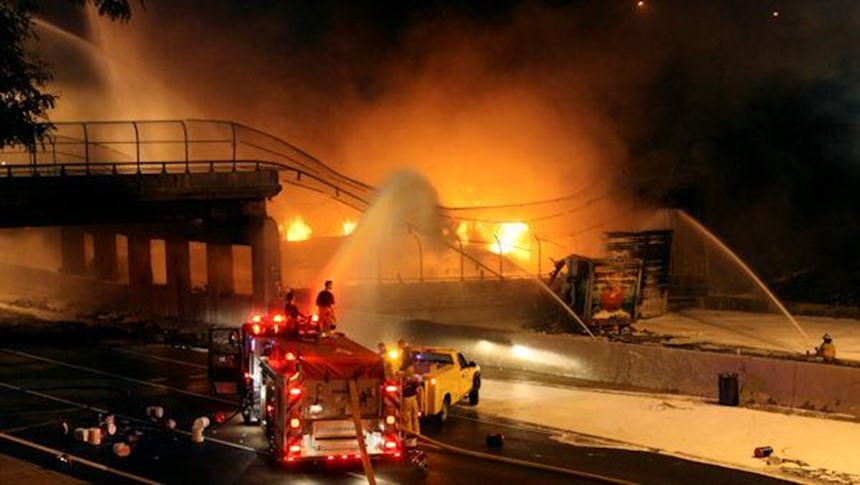
Importance of several parameters on the maximum gas temperatures
|
|
|
Four Geometric Parameters
Two Fire Scenario Parameters
PARAMETERS
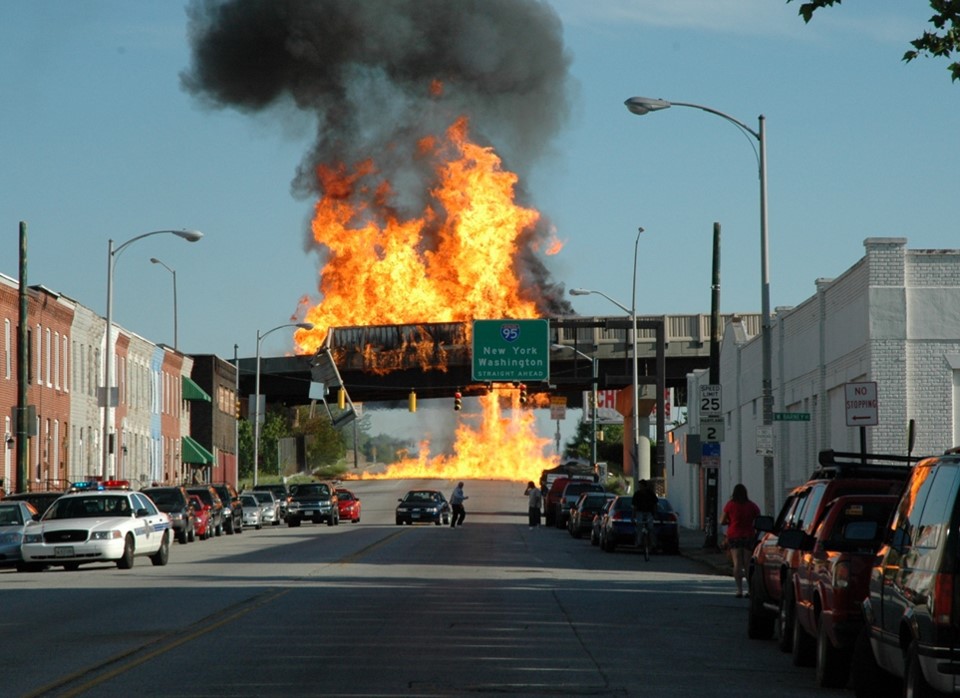
Geometric Parameters
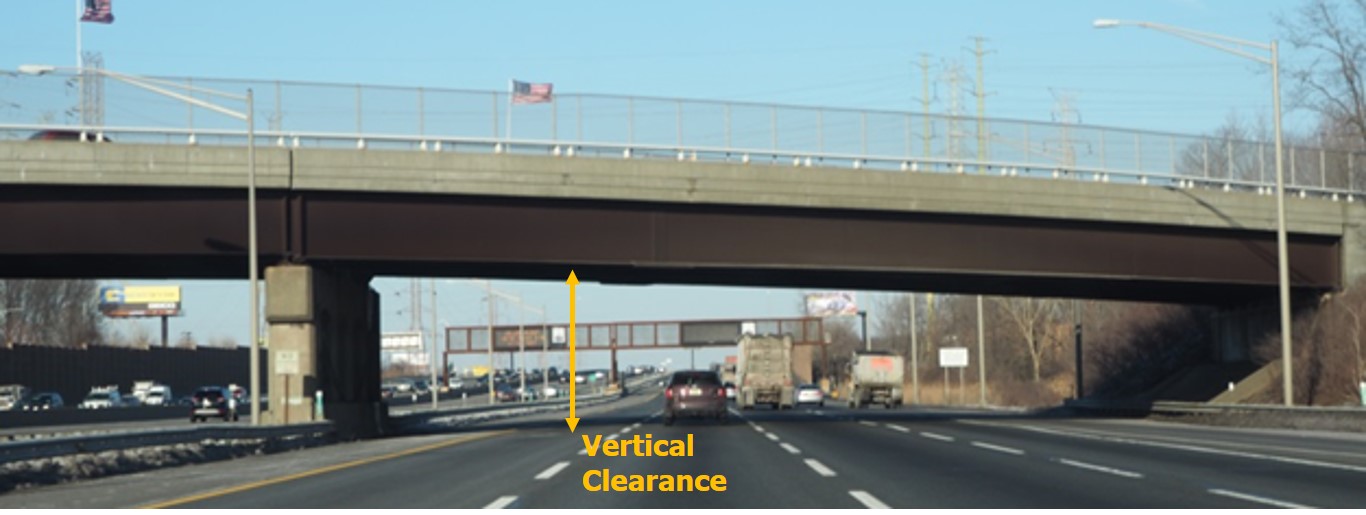 Vertical Clearance (6 and 9 meters)
Vertical Clearance (6 and 9 meters)
Geometric Parameters
Span (16 and 24 meters)

Geometric Parameters
Width (13 and 23.4 meters)

Geometric Parameters
Bridge Substructure (Piers or Abutments)

Geometric Parameters
Bridge Substructure (Piers or Abutments)
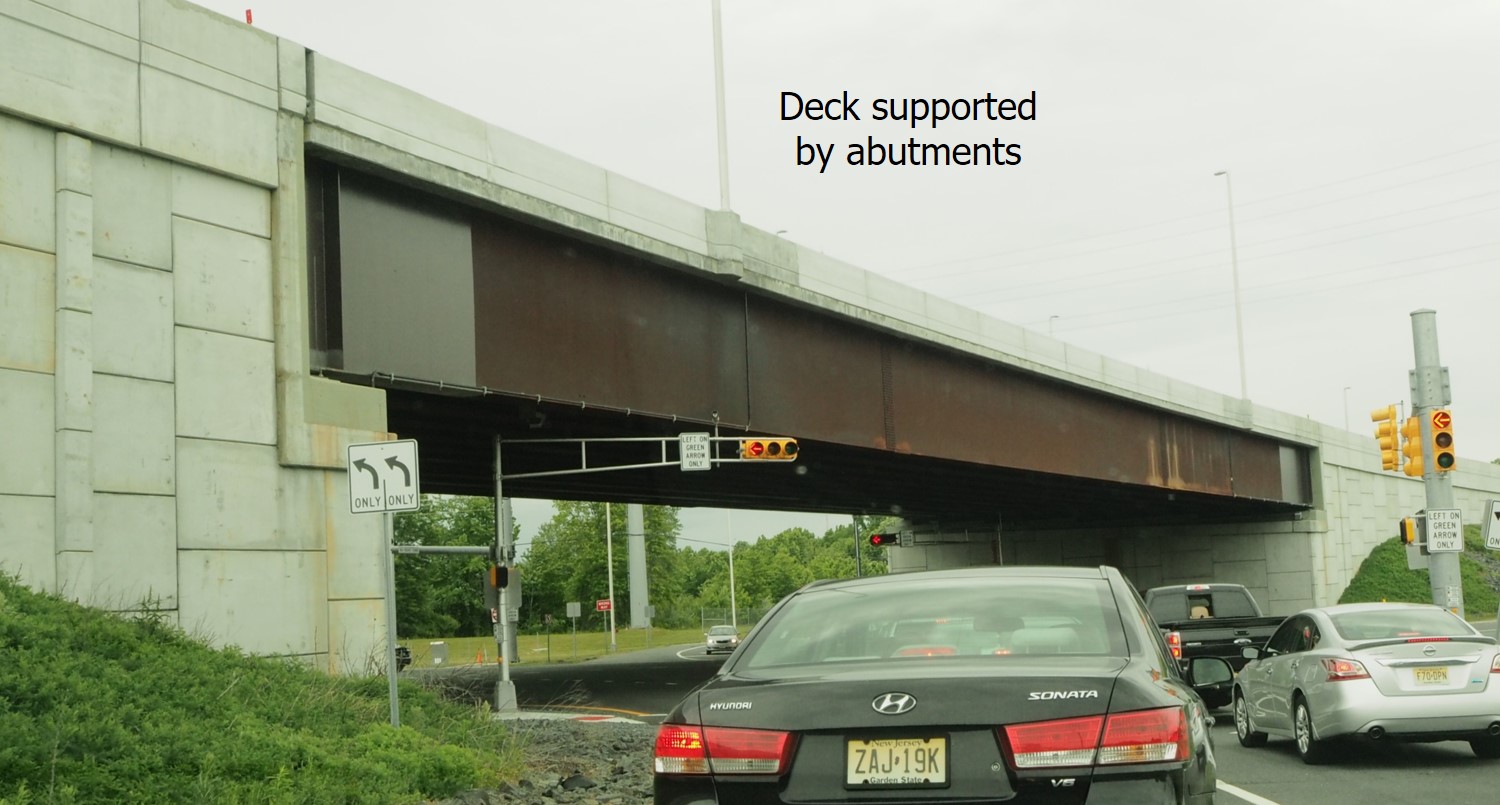
Fire Scenario Parameters
|
Position of the Fuel Load |
Heat Release Rate |

Fire Scenario Parameters
| Vertical | Substructure | Heat | |||
|---|---|---|---|---|---|
| Clearance | Bridge | Span | Release | Position | Width |
| Configuration | Rate | ||||
| 6 m | Piers | 16 m | 1800 kW/m2 (diesel) | Mid-span | 13 m |
| 9 m | Abutment | 24 m | 2400 kW/m2 (gasoline) | Abutment or Pier | 23.4 m |
|
26=64 different cases |
|
26-1 = 32 cases |
Design of Experiments
|
|
Temperatures? |
CFD Simulations
Fire Model using FDS
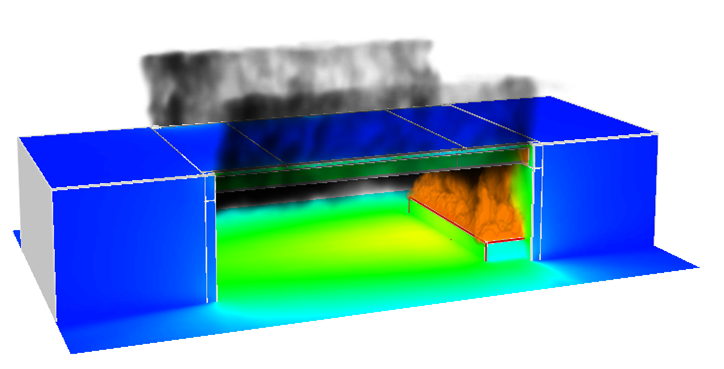
CFD Simulations
|
|
|
Alós Moya et Al. “Analysis of a Bridge Failure due to fire using Computational Fluid Dynamics and Finite Element Models.” Engineering Structures, 68, pp 96-110, 2014.
CFD Simulations

Control Volume: Varies according to the scenario.
- X-direction: 28 to 58 m
- Y-direction: 27 to 30 m
- Z-direction: 12 to 15 m
Mesh: 0.20 x 0.20 x 0.20 m.
- Total amount of cells: 1,134,000 to 3,262,500 cells
CFD Simulations

Fire Load:
- Tanker truck: 30 m2 (12 x 2.5 m) at one meter above road level.
- HRR is a parameter
- CO yield and Soot Yield according to SFPE Handbook
- CO yield = 0.019 g/g
- Soot yield = 0.059 g/g
CFD Simulations

|
Adiabatic Temperatures
|
|
CFD Simulations
Adiabatic temperatures along the most exposed girder
|
|
|
ANOVA ANALYSIS
Maximum Adiabatic Temperatures

What parameters are responsible for these values?

ANOVA
(Analysis of Variance)
ANOVA ANALYSIS
Bottom Flange Temperatures
|
|
|
p-values below 0.05 indicate significance influence
ANOVA ANALYSIS
Web Temperatures
|
|
|
p-values below 0.05 indicate significance influence
ANOVA ANALYSIS
Web Temperatures
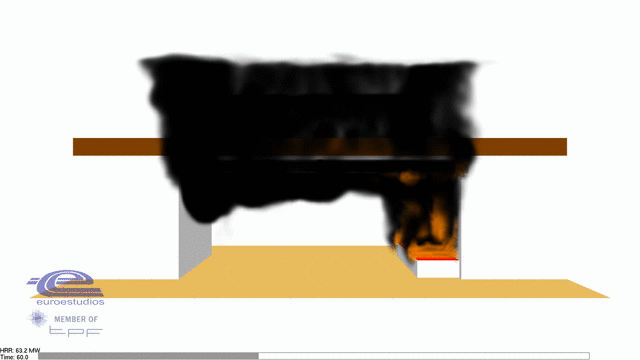

Smoke Accumulation
ANOVA ANALYSIS
Interactions (synergies)
clearance - position - bridge substructure
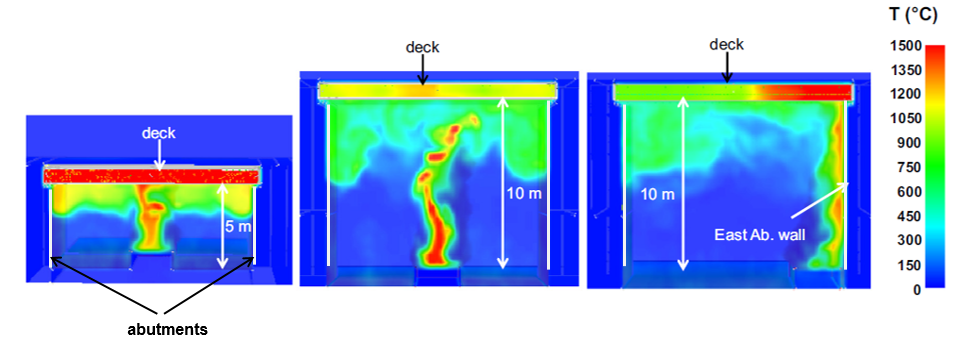
Coandâ Effect
STRUCTURAL ANALYSIS
STRUCTURAL ANALYSIS
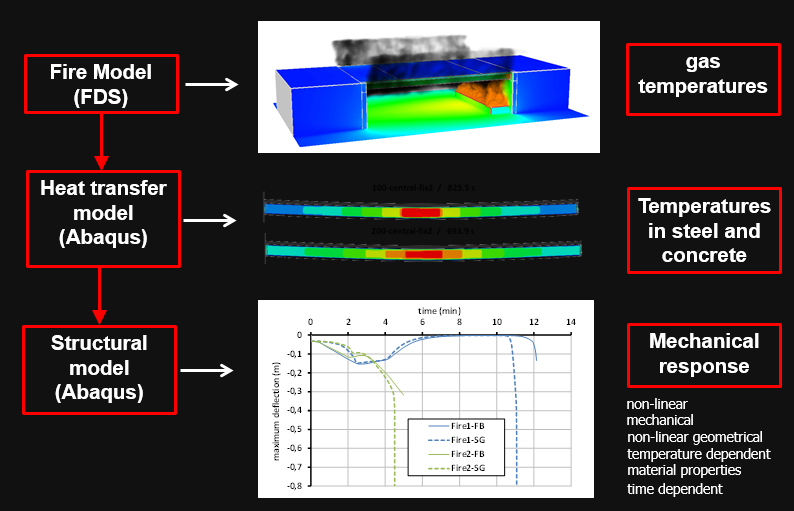
CASE STUDY
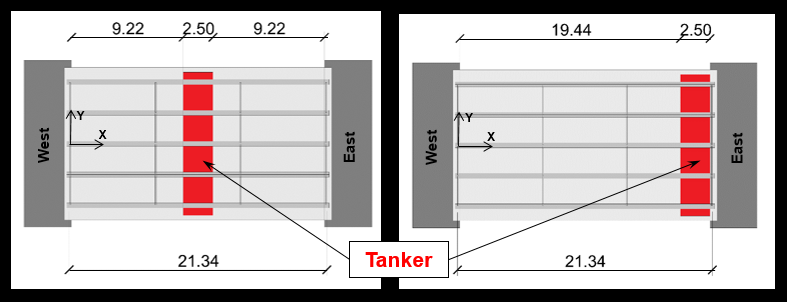
- 21 meters span
- 5 girders
- 2 fire scenarios
BOUNDARIES

RESULTS AND CONCLUSIONS
Bridges fail by yielding of the steel girder when steel reaches its ultimate strain
 Different times and modes of failure
Different times and modes of failure
CONCLUSIONS AND FUTURE WORK
- Vertical Clearance, HRR and fire position have an influence in flange temperatures
- Web temperatures are also influenced by the bridge substructure configuration
- Interactions have to be taken into account (Coandâ Effect)
-
Position of the fire load also influence the structural behavior
THESE CONCLUSIONS SHOULD BE CONSIDERED IN FUTURE PROPOSALS OF FIRE CURVES SPECIFIC FOR BRIDGES

EUROESTUDIOS
|
|
|
|
|
|

